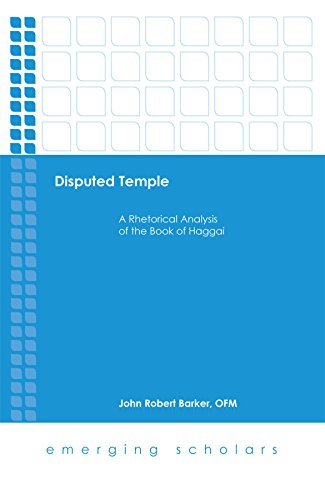O artigo
The Book of Haggai and the Rebuilding of the Temple in the Early Persian Period
By John Robert Barker – Catholic Theological Union, Chicago
The Bible and Interpretation – December 2017
Until recently, the period of biblical history known as the postexilic, or Persian, era has suffered from relative neglect by biblical scholars. True, there are have always been those scholars who dedicated their lives to the study of the books that reflect this period – Ezra, Nehemiah, and the prophets Haggai, Zechariah, and Malachi – but it is only in the last few decades that Persian period studies have come into their own, giving rise to a vigorous and rich field of inquiry, the fruits of which have only begun to emerge. One reason for the relative neglect had been that we simply did not have much information about this period, which stretches from the end of the Babylonian exile (c. 539 BCE) to the advent of Alexander the Great and the beginning of the Hellenistic period (c. 330 BCE). Compared to the abundant archaeological and historical information available for the centuries before and after the Persian period, only a little evidence from outside the Bible was available to shed light on the two centuries after the exile. Yet recent decades have seen a surge in archaeological work focusing on this period that has provided a wealth of insights into economic, political, social, and religious realities in the Persian province of Yehud (the former kingdom of Judah). On the heels of this increased information has come an increased interest by biblicists. Now Persian period studies of all kinds are flourishing and contributing greatly to our appreciation of the challenging and contentious, yet theologically productive, period of the 6th–4th centuries.
One example of these studies is the work that has been done on the book of Haggai. This short book of thirty-eight verses focuses solely on the reconstruction of the Jerusalem temple that had been destroyed by the Babylonians in 586 BCE. In the past, the book’s completely time-bound topic and lack of beautifully poetic, theologically rich passages had led to an unfavorable assessment of both book and prophet by many scholars and theologians. It was not that long ago, for example, that the authors of an introduction to the Old Testament stated that “Haggai is called a prophet, but compared to the pre-exilic prophets he is hardly deserving of the title…. his mind was concentrated only on earthly things…. His whole mental outlook and utilitarian religious point of view…is sufficient to show that he can have no place among the prophets in the real sense of the word.” (Oesterley & Robinson, 1961, pp. 408-9) This particularly blunt evaluation appears to have been shared by others, leading to the book’s general neglect. It simply did not seem to have much to offer the serious student of the Bible or, for that matter, of the history behind it.
But in recent decades the book of Haggai has been subjected to serious and sustained scrutiny by scholars such as Elie Assis and John Kessler, whose excellent work along with others has shown this short book to be much more interesting and complex than previously thought. My own work on Haggai, which engages the text through rhetorical analysis, joins this effort by seeking to reexamine the persuasive intention and strategies of the text (Barker, 2017). Rather than being simply a dull record of an uninteresting prophet and his mundane message, the book of Haggai is in fact a carefully composed and complex counterargument to serious objections to the reconstruction of the temple in 520 BCE. It is also an interpretation of what it meant either to accept or to reject the prophetic call to rebuild. This means that a careful study of the book as a persuasive text can contribute to our understanding of both the book and the nature of the debates surrounding the reconstruction of the temple in Jerusalem in the early years after the exile. This in turn contributes in a specific way not only to the emerging portrait of the early Persian period but also to our appreciation of the nature and strength of the struggles and conflicts among the people who considered themselves the surviving “remnant” of Israel in that time and place.
O livro
BARKER, J. R. Disputed Temple: A Rhetorical Analysis of the Book of Haggai. Minneapolis: Fortress Press, 2017, 314 p. – ISBN 9781506433141.
The prophet Haggai advocated for the rebuilding of the temple, destroyed by Babylon, in the tumultuous period of reconstruction under Persian dominion; so much is evident from a surface reading of the book. John Robert Barker goes further, using rhetorical criticism of the prophet‘s arguments to tease out the probable attitudes and anxieties among the Yehudite community that saw rebuilding as both undesirable and unfeasible. While some in the community accepted the prophet‘s claim that YHWH wanted the temple built, others feared that adverse agricultural and economic conditions, as well as the lack of a royal builder, were clear signs that YHWH did not approve or authorize the effort. Haggai‘s counterarguments-that YHWH would provide for the temple‘s adornment, would bring prosperity to Yehud once the temple was built, and had designated the Davidide Zerubbabel as the chosen royal builder-are combined with his vilification of opponents as unclean and non-Israelite. Barker‘s study thus allows Haggai to shed further light on the socioeconomic conditions of early Persian-period Yehud.

